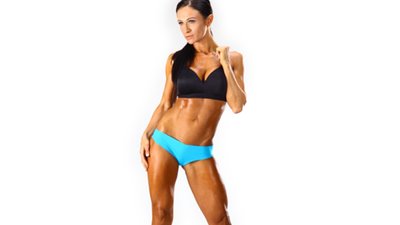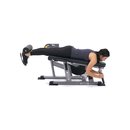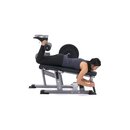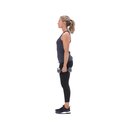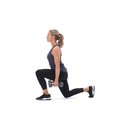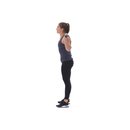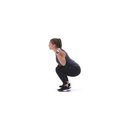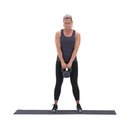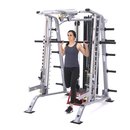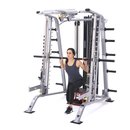Most women, no matter how active they are, have stronger quads than hamstrings and glutes. Think about your typical leg workout—most movements have some involvement from the quads. Additionally, your quads are activated every time you stand up, walk up a flight of stairs, or simply get out of your car.
So it's not uncommon for women to have stronger quads than hammies. In fact, the ideal hamstrings-to-quadriceps strength ratio (H:Q) is 2:3. Your quads should be stronger.
Your quads shouldn't be so much stronger, though, that the H:Q ratio falls out of whack. When that happens, your risk for hamstring and knee injuries jumps.[1] That's not the only risk women run, either. Physiological differences such as increased joint laxity, increased estrogen levels, and anatomical differences in pelvic structure and lower extremely alignment (the Q angle) make women much more susceptible to knee injuries than men.[2,3,4,5]
The good news? Training the muscles that stabilize the knee joint may help decrease the injury rate observed in females. Not to mention, having weak glutes and hamstrings can also be the cause of the dreaded flat-bottom syndrome.
Although women aren't always genetically predisposed to have balanced leg muscles, it doesn't mean you're stuck like that! By training your hamstrings and glutes, you can fix that imbalance, and build more defined legs and a round, firm booty.
If you know your lower half needs work, don't hesitate to work your legs twice per week. Concentrate on the weakest parts of your legs. You don't need to do any isolation exercises for your quads. They get enough work from compound movements such as squats and lunges. Annihilate your glutes and hamstrings to increase their strength and symmetry to match your quads.
Heavy As She Goes
It's tempting to lift with light weight because you don't want to get "bulky." When that thought sneaks into your brain, remember that your muscles won't change unless they have a reason to. Muscles respond to stimulus by growing. They won't grow unless you challenge them.
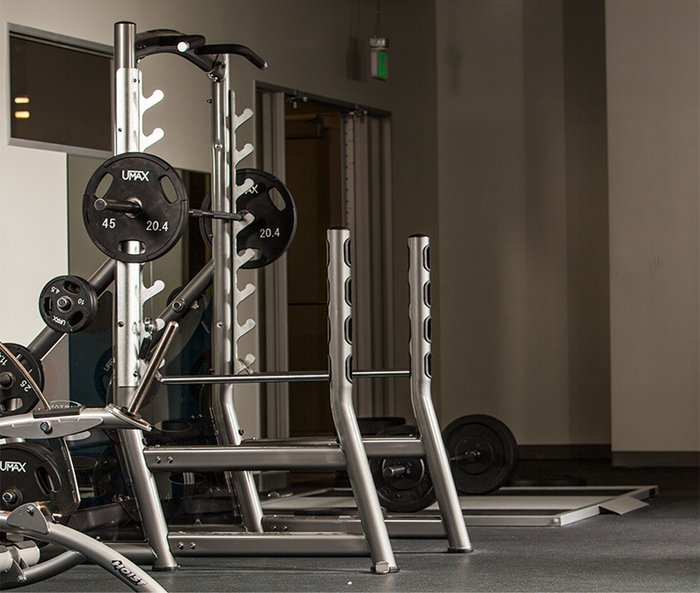
By training your hamstrings and glutes, you can fix that imbalance, and build more defined legs and a round, firm booty.
And, despite what you may have heard, having more muscle mass will actually help you lean out. It takes a lot of energy for your body to build and maintain those muscles, so you'll be burning more calories without even having to think about it!
Leg days are difficult. You might have a love/hate relationship with the gym on those days, but your hard work will pay off!
Glute And Hamstring Workouts
Put these workouts into your regular regimen and enjoy showing off that new pencil skirt!
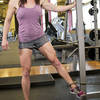



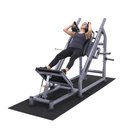
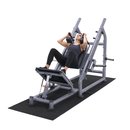
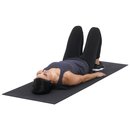
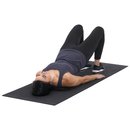


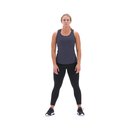
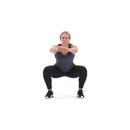
Workout Tips
Because you're hitting your legs twice per week, you may want to invest in some supplements like glutamine and omega-3 fatty acids to assist your recovery. During periods of heavy training, your body's natural supply of glutamine falls, leading to a compromised immune system and an increased risk for infection.[6]
Adding 20-30 g of glutamine to your daily supplement stack may help you recover faster and keep you from having to take any sick days. Add 1,000 mg of omega-3s, which can help reduce inflammation after a hard workout, and you'll be ready to hit that Friday leg workout with all the energy and intensity you had for the Monday workout.[7]
Don't worry so much about machines. You can use the abductor/adductor machine if you want, but if you concentrate on sitting back when you squat, and keeping your knees in line with your toes, you'll be working those muscles anyway.
Although the deadlift is primarily a back exercise, it's also a fantastic hamstring and glute exercise. Add it to your back day and you'll get a little extra booty blast in the middle of the week.
References
- Holcomb, W. R., Rubley, M. D., Lee, H. J., & Guadagnoli, M. A. (2007). Effect of hamstring-emphasized resistance training on hamstring: quadriceps strength ratios. Journal of Strength & Conditioning Research, 21(1), 41-47.
- Haycock, C. E., & Gillette, J. V. (1976). Susceptibility of women athletes to injury: myths vs reality. Jama, 236(2), 163-165.
- Wojtys, E. M., Huston, L. J., Lindenfeld, T. N., Hewett, T. E., & Greenfield, M. L. V. (1998). Association between the menstrual cycle and anterior cruciate ligament injuries in female athletes. American Journal of Sports Medicine,26(5), 614-619.
- Zelisko, J. A., Noble, H. B., & Porter, M. (1982). A comparison of men's and women's professional basketball injuries. American Journal of Sports Medicine, 10(5), 297-299.
- Whiteside, P. A. (1980). Men's and women's injuries in comparable sports. Physician Sportsmed, 8(3), 130-140.
- Parry-Billings, M., Budgett, R., Koutedakis, Y., Blomstrand, E., Brooks, S., Williams, C., & Newsholme, E. A. (1992). Plasma amino acid concentrations in the overtraining syndrome: possible effects on the immune system. Medicine and Science in Sports and Exercise, 24(12), 1353-1358.
- Jouris, K. B., McDaniel, J. L., & Weiss, E. P. (2011). The effect of omega-3 fatty acid supplementation on the inflammatory response to eccentric strength exercise. Journal of Sports Science & Medicine, 10(3), 432.

